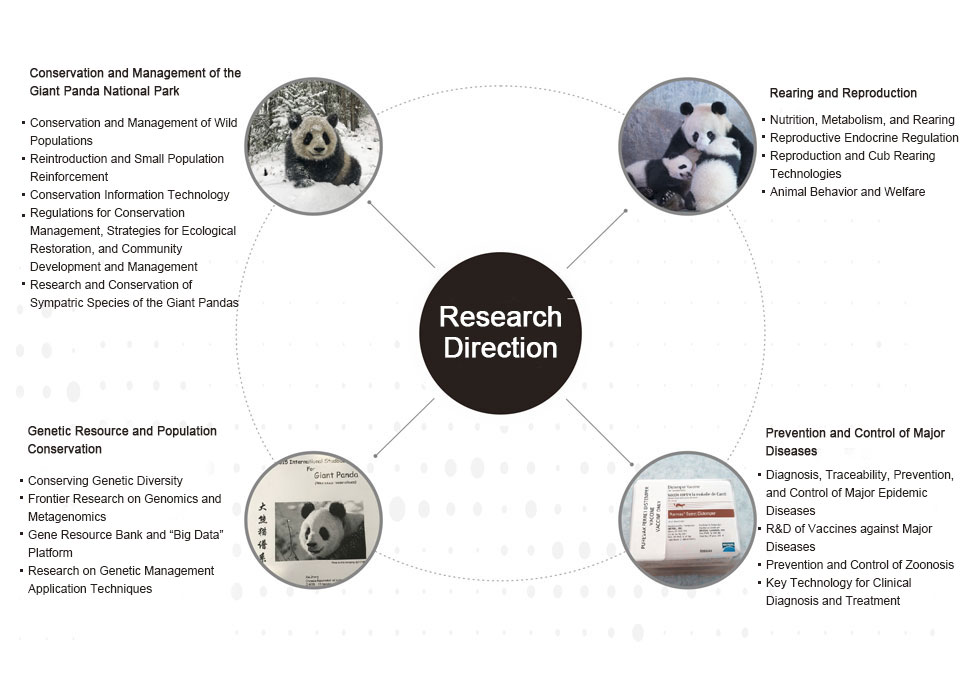


Direction 1: Conservation Thremmatology of Endangered Wildlife
Research on giant panda breeding, healthy feeding, and conservation of genetic resources has been carried out. In addition, an assisted reproductive technology system, healthy feeding methods and gene resource bank for giant pandas have also been established. The Base has won more than 70 scientific research projects; 6 national, provincial, and ministerial awards; published more than 100 SCI papers; obtained over 40 national invention patents; and formulated 1 local standard.

Direction 2: Conservation Genetics of Endangered Wildlife
The Base conducts research on the conservation of genetic diversity of rare animals endemic to China such as giant pandas, builds genomic data platforms, and develops molecular genetic markers with a focus on genome and evolution, population genetic management, and other issues. The technical problems inherent to DNA identification and population genetic management of giant pandas, South China tigers, red pandas, red-crowned cranes, etc. have been resolved. The Base has undertaken 15 national scientific research projects, won 4 national, provincial, and ministerial awards, published more than 100 academic papers, obtained 8 national invention patent authorizations, and formulated 2 industrial/local standards.

Direction 3: Disease Prevention and Control of Endangered Wildlife
A pathogen diagnosis and monitoring system and a biological agent research and development platform have been constructed around the prevention and control of major diseases of giant pandas and other rare wildlife. A variety of emerging diseases that inflict giant pandas and red pandas were reported for the first time, including giant panda feline panleukopenia virus, babesia disease, red panda novel parvovirus, etc. The achievements of ensuring population safety in rare wildlife such as giant pandas have been achieved. The research results have been publicized and applied to many giant panda breeding units such as the Chengdu Research Base of Giant Panda Breeding, as well as Giant Panda National Park and Nature Reserves. The Base has won 21 scientific research projects, including the Sichuan Provincial Science and Technology Program, has published 46 academic papers in Science of the Total Environment and other important journals at home and abroad, including 21 SCI papers, and obtained 2 national patent authorizations, including 1 invention patent.

Direction 4: Conservation Ecology of Endangered Wildlife
The Base conducts research on the conservation and management of endangered wildlife populations such as giant pandas, reintroduction and rejuvenation of small populations, and conservation information technology and intelligence, establishes a sustainable rejuvenation model for small populations with reintroduction as the core to the technology, and builds an intelligent monitoring system for wildlife. The Base presides over 32 scientific research projects, and has won 1 First Prize of Sichuan Provincial Science and Technology Progress Award. In addition, it has published more than 100 academic papers in important journals at home and abroad, obtained 27 national patent authorizations, including 20 invention patents, and formulated 4 industrial and local standards.
